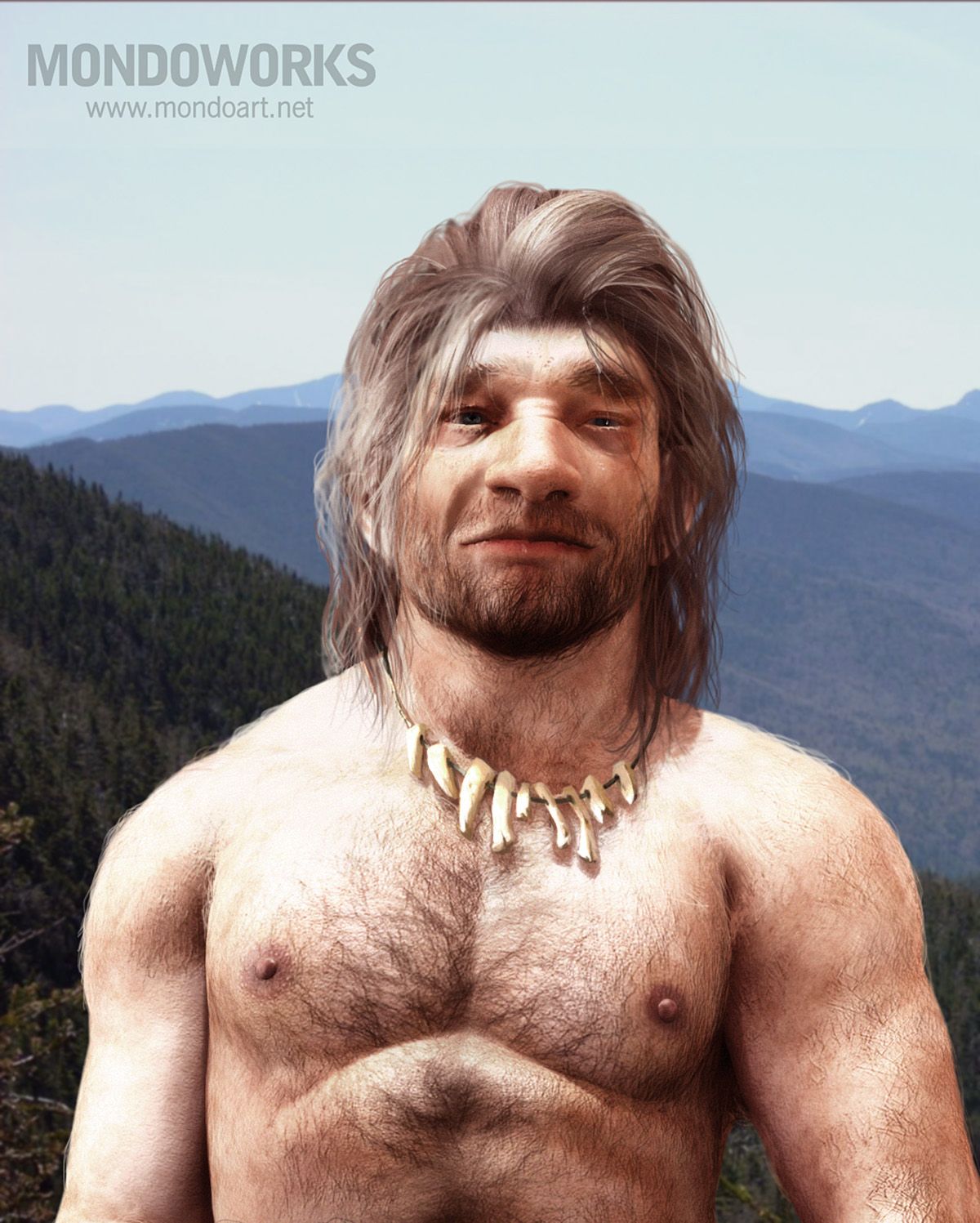 Neanderthals more rarely known as Neandertals were archaic humans that became extinct about 40,000 years ago. They seem to have appeared in Europe and later expanded into Southwest, Central and Northern Asia. There, they left hundreds of stone tool assemblages. Almost all of those younger than 160,000 years are of the so-called Mousterian techno-complex, which is characterised by tools made out of stone flakes.
Neanderthals more rarely known as Neandertals were archaic humans that became extinct about 40,000 years ago. They seem to have appeared in Europe and later expanded into Southwest, Central and Northern Asia. There, they left hundreds of stone tool assemblages. Almost all of those younger than 160,000 years are of the so-called Mousterian techno-complex, which is characterised by tools made out of stone flakes.
Neanderthals are considered either a distinct species, Homo neanderthalensis or more rarely a subspecies of Homo sapiens (H. s. neanderthalensis). Modern humans and Neanderthals share 99.7% of their DNA and are hence much more closely related than to their closest non-human relative, the chimpanzee(98.8%). Compared to modern humans, Neanderthals were stockier, with shorter legs and a bigger body. In conformance with Bergmann's rule, this likely was a Darwinian adaptation to preserve heat in cold climates. Male and female Neanderthals had cranial capacities averaging 1,600 cm3 (98 cu in) and 1,300 cm3 (79 cu in), respectively, extending to 1,736 cm3 (105.9 cu in) in the male Amud 1. This is notably larger than the 1,250 to 1,400 cm3 (76 to 85 cu in) typical of modern humans. Males stood 164 to 168 cm (65 to 66 in) and females 152 to 156 cm (60 to 61 in) tall.
The Neanderthal genome project revealed in 2010 that, through interbreeding, Neanderthals may have contributed to the DNA of modern humans, likely between 50,000 and 60,000 years ago. Today, this is apparent in the genome of most people living outside sub-Saharan Africa, as well as in some sub-Saharan Africans. Subsequent studies suggested there may have been three episodes of interbreeding. The first would have occurred soon after non-African modern humans left Africa. The second would have occurred after the ancestral Melanesians had branched off—these people seem to have thereafter bred with Denisovans. The third would have involved Neanderthals and the ancestors of East Asians only.
Neanderthals are named after one of the first sites where their fossils were discovered in the 19th century in the Neandertal in Erkrath, Germany. Thal is an older spelling of the German word Tal (with the same pronunciation), which means "valley" (cognate with English dale).
Neanderthal 1 was known as the "Neanderthal cranium" or "Neanderthal skull" in anthropological literature, and the individual reconstructed on the basis of the skull was occasionally called "the Neanderthal man". The binomial name Homo neanderthalensis—extending the name "Neanderthal man" from the individual type specimen to the entire group—was first proposed by the Anglo-Irish geologist William King in 1864, although that same year King changed his mind and thought that the Neanderthal fossil was distinct enough from humans to warrant a separate genus.[6] Nevertheless, King's name had priority over the proposal put forward in 1866 by Ernst Haeckel, Homo stupidus. The practice of referring to "the Neanderthals" and "a Neanderthal" emerged in the popular literature of the 1920s. The German pronunciation of Neandertaler is [neˈandɐˌtʰaːlɐ] in the International Phonetic Alphabet. In British English, "Neanderthal" is pronounced with the /t/ as in German, but different vowels (IPA: /niːˈændərtɑːl/). In layman's American English, "Neanderthal" is pronounced with a /θ/ (the voiceless th as in thin) and /ɔ/ instead of the longer British /aː/ (IPA: /niːˈændərθɔːl/), although scientists typically use the /t/ as in German. *Wiki